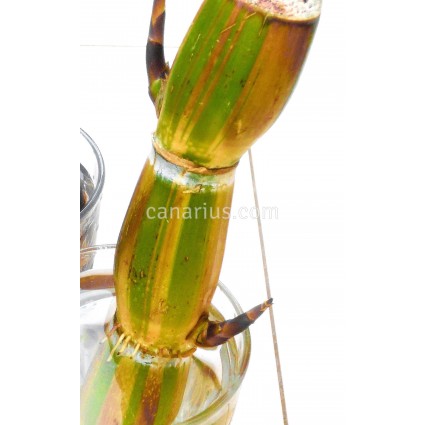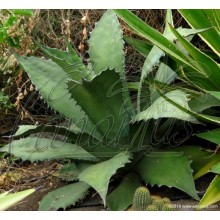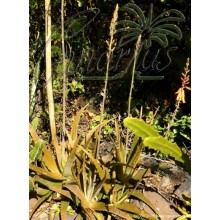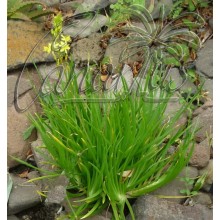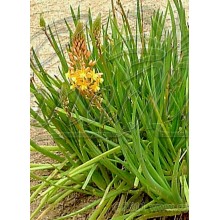Saccharum officinarum ' Kō hāpai ' - Pregnant Sugar Cane
Nuevo
More than 100 traditional cultivars of sugar cane existed in ancient Hawaii, but this is one of the most unusual. "Hapai" in Polynesian languague means pregnant, because this cane has "bellies, as the internodes are swollen. Canes are ornamental in many ways because they are striped in yellow, orange and green. The whole plant is not as tall as other sugarcanes and its sweet juice is typically fresh, and a bit starchy. This is an ancient cultivar of Sugarcane and it originated in New Guinea, and the Hawaiian natives brought it in their canoes not too far ago.
Sugar Cane is a 3-5 m (9-15 ft) tall tropical grass that produces most of the world sugar. Saccharum officinarum grows in tropical to warm mediterranean climates. Canes can be peeled and eaten at any moment, they are best after blooming. Sugar cane is very fast growing in hot summer weather, water and fertilize abundantly in summer. It is hardy to light frosts. Protect the base if frosts are expected.
Canarius offers a super thick 50 cm ready-to-sprout cutting.
Cuttings are the best way to reproduce sugar cane, because they root easily and will give a plant exactly like the original mother plant. Let's plant our cuttings in a sandy and draining soil. Keep them moist and warm above 17 C to take root. The best rooting temperature is 20-30 C.
how to root sugarcane cuttings.
Visit THIS LINK and see pictures of our fruit trees on the packing desk and learn more about what we ship, including the sugarcane cuttings.
| Cultivada | Protegido |
| Origen de la especie | Oceanía |
| Forma presentación | Esquejes |
| Tamaño Máx. | 250cm-300cm |
| Familia Botánica | Poaceae |
| Luz | Sol |
| Temperatura mínima invierno | 0 ºC a 15 ºC |
| Época de floración | Otoño |
| Tipo de planta | Herbácea |
| Color | Amarillo |
| Color | Verde |
| Color | Naranja |
| Cuidados | Maceta |
| Forma | Rizomatosas |
-
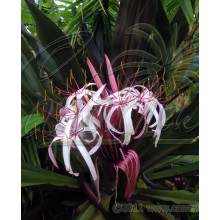
Crinum procerum splendens
29,80 € -
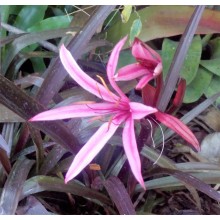
Crinum x Menehune
24,60 €















